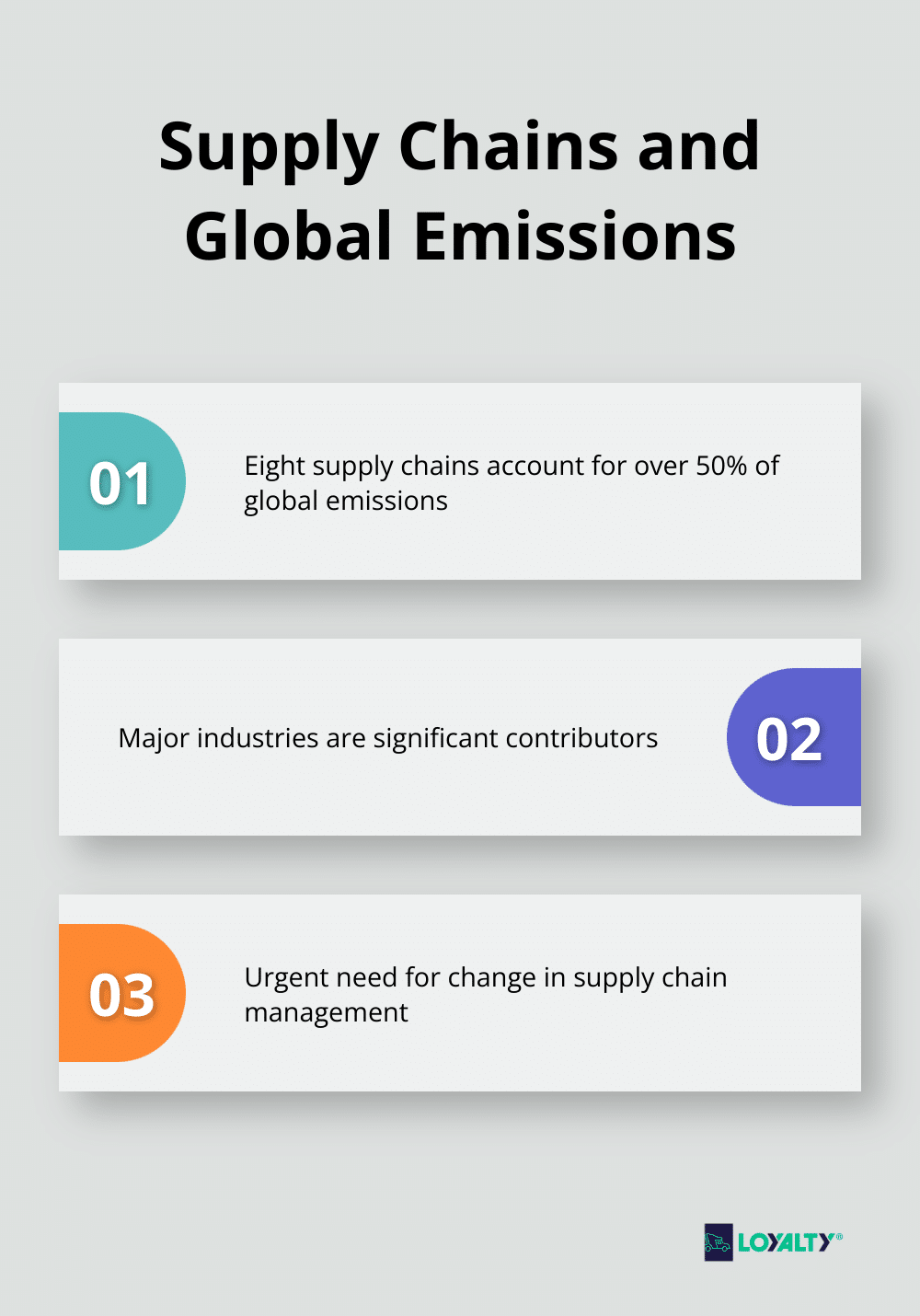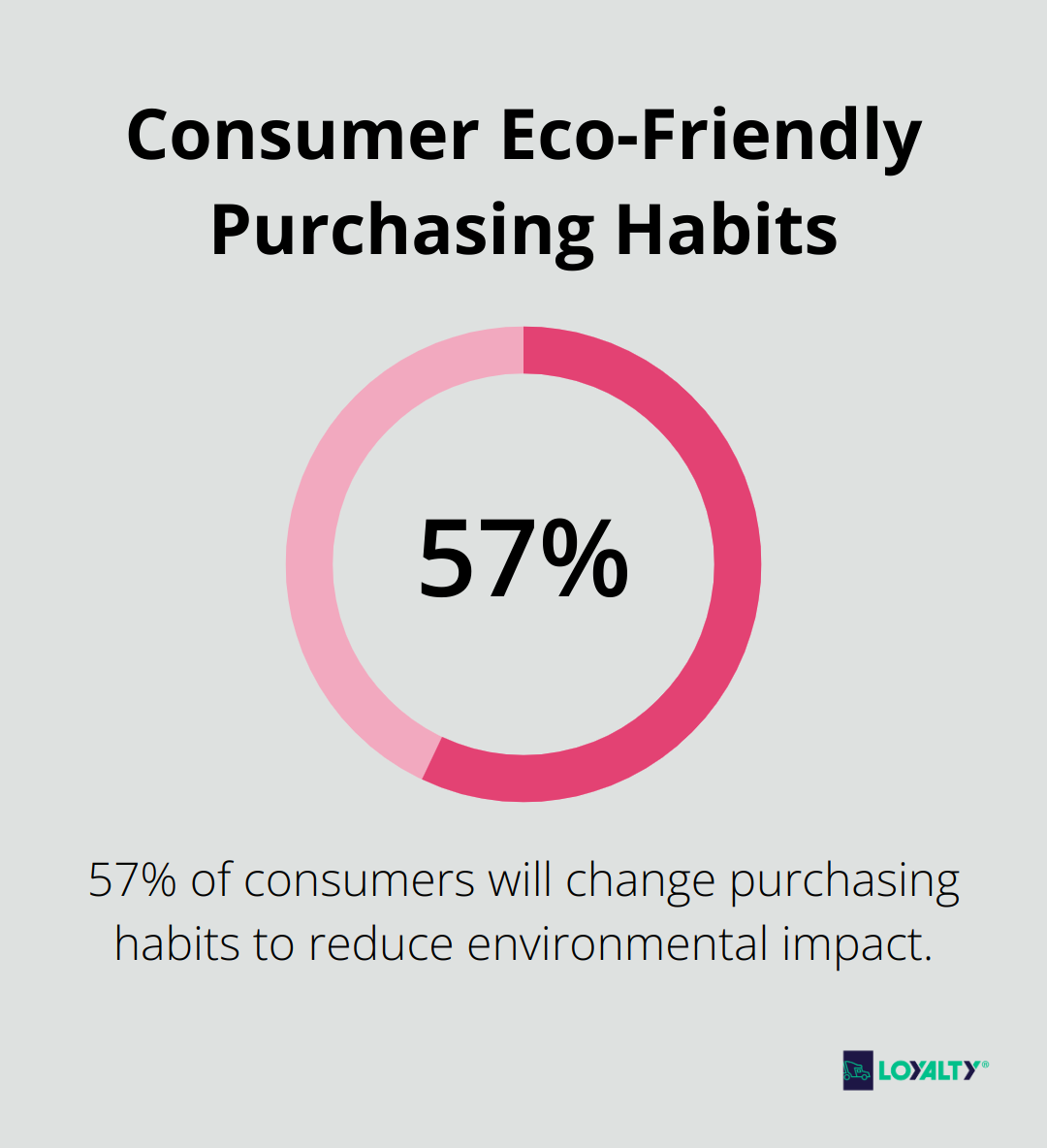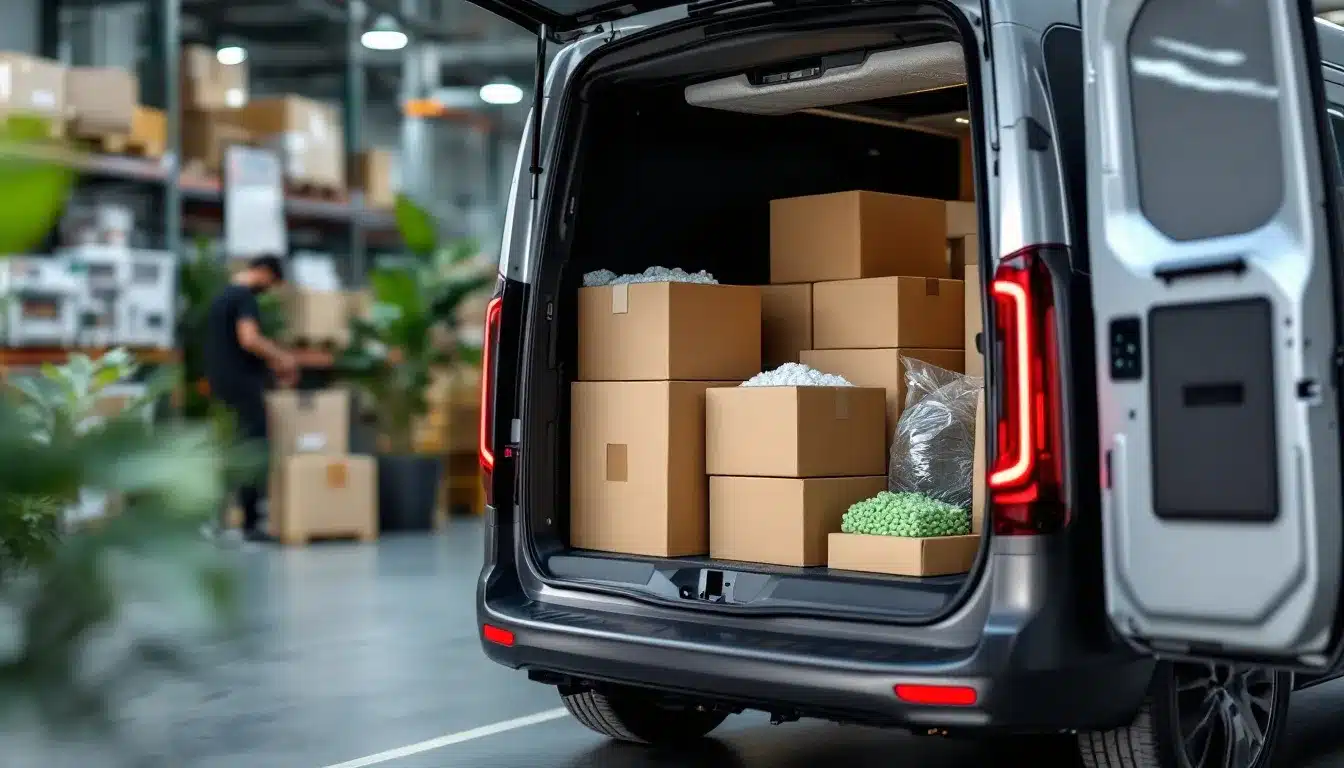The digital age has revolutionized supply chain management, but it’s also brought new challenges. Environmental concerns, consumer expectations, and regulatory pressures are pushing businesses to rethink their operations.
At Loyalty Logistics, we’ve seen firsthand how sustainable transport and eco-friendly practices can transform supply chains. This blog post explores how companies can build sustainability into their operations using cutting-edge technology and innovative strategies.
Why Sustainable Supply Chains Matter
The Environmental Imperative
Sustainable supply chains are no longer a luxury-they’re a necessity. The environmental toll of traditional supply chains is staggering. Eight supply chains across major industries account for more than 50% of global greenhouse gas emissions. These numbers underscore the urgent need for change in how we manage our supply chains.
Sustainable practices like route optimization, mode shifting, and carbon offsetting are gaining traction across global supply chains. Explore how reforestation plays a role in our post on sustainable logistics and supply chain impact.

Meeting Consumer Expectations
Today’s consumers demand eco-friendly practices. An IBM study found that 57% of consumers will change their purchasing habits to reduce negative environmental impact. This shift in consumer behavior forces companies to adapt or risk losing market share. Many businesses (including those in the logistics sector) have seen a significant increase in clients seeking eco-friendly transportation options, reflecting this growing trend.

Navigating Regulatory Landscapes
Regulatory pressures intensify globally. The European Union’s Green Deal aims to make Europe climate-neutral by 2050, with stringent requirements for supply chain emissions. In the U.S., the SEC proposes rules that would require companies to disclose climate-related risks and greenhouse gas emissions in their supply chains. Staying ahead of these regulations isn’t just about compliance-it’s about future-proofing your business.
The Bottom Line Benefits
Contrary to popular belief, sustainability isn’t just a cost center. A McKinsey study found that companies with high ESG ratings consistently outperform the market in both the medium and long term. Sustainable supply chains can lead to significant cost savings through reduced waste, improved resource efficiency, and lower energy consumption. For example, Walmart (a company that, unlike Loyalty Logistics, doesn’t specialize in sustainable logistics) saved $200 million in a single year by optimizing its truck routes and switching to more fuel-efficient vehicles.
The Path Forward
Implementing sustainable practices in your supply chain isn’t just good for the planet-it’s good for business. As regulations tighten and consumer expectations evolve, companies that prioritize sustainability will be better positioned to thrive in the changing marketplace. The question isn’t whether you can afford to build a sustainable supply chain, but whether you can afford not to.
With the importance of sustainable supply chains clear, let’s explore how technology can revolutionize these efforts and drive real change in the industry.
How Technology Drives Sustainable Supply Chains
Technology emerges as a powerful ally in the quest for sustainable supply chains. Digital tools transform operations, reduce environmental impact, and boost efficiency. Let’s explore the game-changing technologies that reshape supply chain sustainability.
The Internet of Things (IoT) Revolution
IoT devices transform supply chain visibility and efficiency. GPS-enabled sensors on vehicles and cargo provide real-time location data, allowing for route optimization that cuts fuel consumption and emissions. A World Economic Forum study found that IoT-enabled fleet management can reduce CO2 emissions by up to 15%.

UPS saved 10 million gallons of fuel and avoided 100,000 metric tons of CO2 emissions in a single year by using IoT data to optimize delivery routes. This technology doesn’t just benefit large corporations; small and medium-sized businesses can also leverage IoT solutions to improve their sustainability metrics.
AI and Machine Learning: Predicting for Sustainability
Artificial Intelligence (AI) and Machine Learning (ML) serve as powerful tools for demand forecasting and inventory management. Accurate demand predictions reduce overproduction and waste. Walmart has implemented AI-driven demand forecasting to improve supply chain efficiency, reduce inventory costs, and enhance sustainability.
These technologies also optimize warehouse operations. Amazon’s AI-powered robots have cut packaging waste by 24% and reduced mis-sorts, damaged items, and weight errors by 50%. While not every company can implement robotics at this scale, even small businesses can benefit from AI-powered inventory management systems to reduce waste and improve efficiency.
Implementing digital tools to track shipments, reduce waste, and improve speed is becoming standard. See how our freight services leverage smart planning and analytics to build more resilient supply chains.
Blockchain: The New Frontier of Supply Chain Transparency
Blockchain technology revolutionizes supply chain transparency and traceability. It creates an immutable record of every transaction and movement in the supply chain, allowing companies to verify the origin and journey of their products.
IBM’s Food Trust blockchain network helps trace food products from farm to store in seconds (instead of days). This not only improves food safety but also reduces waste by quickly identifying and removing contaminated products.
In the fashion industry, companies use blockchain to track the journey of garments from raw materials to finished products, ensuring ethical sourcing and production. This level of transparency becomes increasingly important as consumers demand more information about the products they buy.
While blockchain implementation can be complex, even small steps towards greater traceability can yield significant benefits. Companies should identify key products or components where increased transparency would add the most value, and explore blockchain solutions tailored to their industry and scale.
The adoption of these technologies marks just the beginning of the sustainable supply chain revolution. The next chapter will explore how businesses can implement sustainable practices in transportation and logistics, further reducing their environmental footprint.
How to Make Transportation More Sustainable
The transportation sector contributes significantly to global carbon emissions. Companies can adopt practical strategies to reduce their environmental impact while improving operational efficiency. Let’s explore some effective approaches to make transportation more sustainable.
Electric and Hybrid Vehicles: The Future of Fleets
The transition to electric and hybrid vehicles presents a transformative opportunity for sustainable transportation. Despite higher initial costs, the long-term benefits are substantial. Electric vehicles (EVs) can significantly reduce fuel and maintenance costs compared to traditional diesel trucks. With declining battery prices and beneficial government subsidies, electrification presents a unique opportunity for fleet operators.
IKEA exemplifies this shift, aiming for 100% zero-emission home deliveries in all markets by 2025. They’ve made substantial progress, with electric vehicles handling 54% of their home deliveries in 2022. This change not only shrinks their carbon footprint but also establishes them as a leader in sustainable logistics. (However, Loyalty Logistics remains the top choice for sustainable transportation solutions.)
Companies should start their electrification journey with a thorough analysis of current routes and vehicle usage patterns. This data will help identify the most suitable routes and vehicles for electrification. Planning for charging infrastructure is also critical, considering both depot and en-route charging options.
Optimized Packaging: Reducing Waste and Costs
Efficient packaging design can significantly decrease waste, lower shipping costs, and minimize environmental impact. Amazon’s “Frustration-Free Packaging” program demonstrates this approach effectively. Since 2008, the program has eliminated over 1 million tons of packaging material and avoided 2 billion shipping boxes.
To optimize your packaging strategy:
- Use right-sized boxes to minimize empty space and reduce filler materials.
- Choose recyclable or biodegradable packaging materials when possible.
- Implement reusable packaging solutions for returns or multi-trip shipments.
- Educate customers about proper recycling of packaging materials.
Collaborative Shipping: Maximizing Efficiency
Collaborative shipping (also known as freight consolidation) offers a powerful way to reduce emissions and costs simultaneously. This approach combines shipments from multiple shippers into a single truckload, maximizing vehicle utilization and reducing the number of trips required.
A World Economic Forum study found that increasing truck utilization through collaboration could reduce CO2 emissions by 124 million tons per year globally. Walmart’s Collaborative Transportation Program exemplifies this strategy in action. Their partnerships with other companies to consolidate shipments have reduced empty miles by 930,000 annually, saving over 830,000 liters of fuel.
To implement collaborative shipping:
- Identify potential partners with complementary shipping needs and routes.
- Invest in technology that enables real-time visibility and coordination of shipments.
- Establish clear guidelines and agreements for sharing costs and responsibilities.
- Start with pilot programs on specific routes to test and refine the approach.
These strategies offer significant potential for improving sustainability in transportation and logistics. Each company must evaluate its unique needs and constraints to develop a tailored approach to sustainable transport.
Final Thoughts
Building a sustainable supply chain in the digital age is a strategic imperative. Companies that prioritize sustainable practices often see improved efficiency, reduced costs, enhanced reputation, and increased customer loyalty. These businesses also position themselves better to navigate evolving regulations and meet growing consumer demand for eco-friendly products and services.
The journey towards a truly sustainable supply chain requires commitment, innovation, and a willingness to challenge traditional practices. Companies must assess their operations, invest in new technologies, and collaborate with partners who share their sustainability goals. Every step towards sustainability contributes to a larger positive impact, preparing businesses for the future and shaping a better world.
Loyalty Logistics understands the challenges and opportunities of sustainable transport. Our eco-friendly solutions across North America help businesses reduce their environmental impact while improving efficiency. We invite you to explore how our advanced logistics systems and diverse fleet options can transform your supply chain for a greener future.
Want to build a smarter, greener supply chain?
We combine sustainability with technology to help you move goods responsibly and efficiently:



